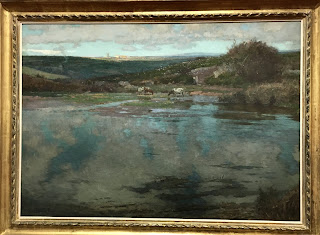A project on involuntary childlessness.
Recently I joined a group of childless women who wanted to have children in a project run by the artist Melanie Stidolph, called ‘Dusk till Dawn’.
I attended several sessions where we met but I did not join the final one to film at a beach as I thought it would be too physically demanding for me as it required dusk and dawn performances with an overnight stay in a bell tent or nearby youth hostel.
I also had misgivings about the way the whole thing was going.
I have been in collaborations before - on my MA we tried and wrote about the process. Way back in Brixton Womens’ work I participated in three things in the 80’s in which I felt I was an equal artist member.
Melanie was working with a group not all of whom would say they were artists or singers.
It was wonderful to meet with childless women and hear their moving stories. It was a worthy idea for Melanie to embark on. But we were volunteers helping her realise her idea, not collaborators.
Were we a little more than the anonymous folk who make Anthony Gormley’s clay figures to his formula - or the workers who made Judy Chicago’s ‘Dinner Party’ embroideries to her exacting standards? - well at least we were credited in this case and we did get meaningful meetings.
Collaboration would require more time and few preconceived notions of the result.
Melanie had already engaged the excellent Clare Ingleheart to conduct us and to write part songs.
She probably had the costume people in mind and she had decided the performance venue, which had to be changed to get permission to another rocky beach near the original choice.
Melanie had work about her theme in the Exchange show, ‘We are floating in space’ and as this was all about artists using the coastline I realised as I left the premier of her film that the childlessness was shoehorned into the coast idea perhaps to get this painful subject shown.
People shy away from childlessness in life and art as I know from trying to show my own work about it. (available now on axisweb and Vimeo and on Jody Day’s instagram ‘Gateway’ )
I have to applaud Melanie for her project, and thank her for the opportunity.
The best part, the raw emotional impactful part was the talking with the other women, and we heard also of the singing done that was not filmed after the crew left.
Time was spent although it seemed rushed along and a lot of money was available for equipment and crew - the paid people- from the Lottery and Arts Council.
The flashing lights in the video triggered by sound seemed meaningless and gimmicky and might warrant an epilepsy warning.
I feel the costumes looked like the handmaid’s tale, the film was too long and slow, the whole subject was diluted to the point of being completely lost. Why was it at the beach? Why was it made into a sort of ritual ?
As for the wonderful group - I was removed from the what’s app as soon as I said I wasn’t going to be in the performance.
Will we meet up? There would be scope for a therapeutic online thing, for a booklet about the moving stories but I doubt it will happen.
The premier was shown at The Exchange, Penzance, projected in a pale way not in a dark rooom but on a wall at a neck crooking height - much better on the video screen where the colours were vibrant. The discussion was mostly inaudible despite me asking twice for them to speak louder and the eventual production of one microphone.
The subject is an important one.
Perhaps one day we can have a whole show about childlessness.














